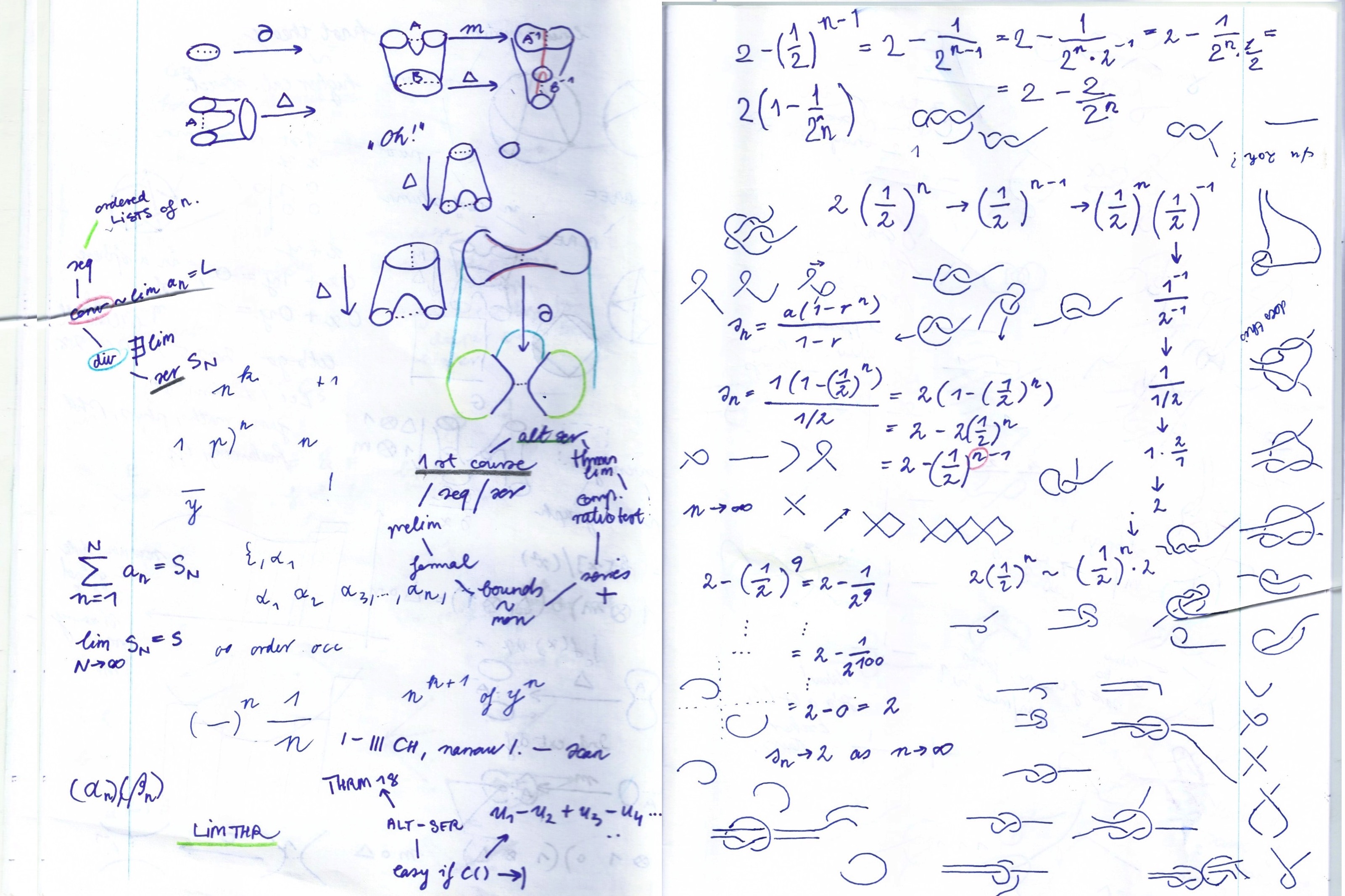levels of abstractions
levels of abstraction #
I am stuck at 1 ⟶ ℝ
v₀.₀₀₁: 𝟏 ⟶ ℝ ≡ constant f(x) = c
v₀.₀₁: Aff(ℝ) ⊂ Poly₁
v₀.₁: Polyₙ ≅ Free[ℝ[x]]
v₁: Tₙ(x) ∈ span{sin(nx), cos(nx)}
v₂: Sₙ(f) = ∑ aₖ e^{ikx} (Fourier sums)
v₃: Dₙ ∗ f = convolution via Dirichlet kernel
v₄: ∥Dₙ ∗ f − f∥_∞ → 0 : uniform convergence
v₅: ∥⋅∥_{Lᵖ} : approximation in norm
v₆: f ∈ C^k, L^p ⟶ f ≈ Poly via Stone–Weierstrass film is mathematics #
Set ⇄ Vct Pp ⇒ De
generatori relaxioni per costruire gruppi e categorie film custriti da motivi ricorrenti, simboli, dualita
surrealismo come funzioni non-lineari
vedere schemi astratti, analoghi a trovare simmetrie in geometria o recorrenze in algebra
built-in continuity #
via internal logci $\mathbf{Cont}(ℝ, ℝ)$ is a morphism object function space is internalised
mass-energy bends the rubber sheet
mem : {o,*} × {o,*} ⟶ Prop ~ a ∈ B is a relation b/w 2 sets 💡
(•‿•) für Kategorien, (⇨‿⇨) für Funktoren, (⌒‿⌒) für Naturtransformationen
(Hom : Obj ⟶ Obj ⟶ Type)
alogirhtms are constructive proofs of ∃ !
- in a type system Algorithm : A ⟶ B ~ Proof of (A ⇒ B)
def id (a : \a) : \a := a
∀α, α ⟶ α id_α : α ⟶ α, id_α(a) = a
id : A ⟶ B id : α ⟶ α, a ∈ α, a ⟼ a
{x // P x}
is a Sigma type!
any Type defines an initial algebra to a functor different ways of writing in Lean, awesome, I learnt arrow notation is much more readable for me
equations, inequalities, basic ml stms complex stms in lean, are built u(∧∨⇒¬...∃∀)
succ(a) + b = succ(a +b) σa + b = σ(a + b)
I thought this cobordism looked like pants #
and then yesterday I learnt they are indeed called pants!

- Previous: I can be computer agent
- Next: pebbles